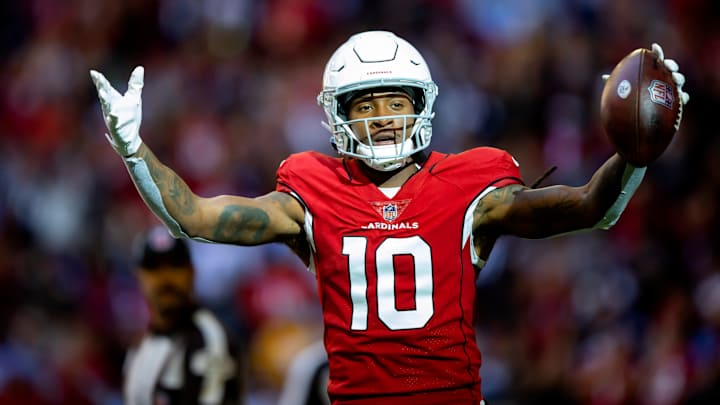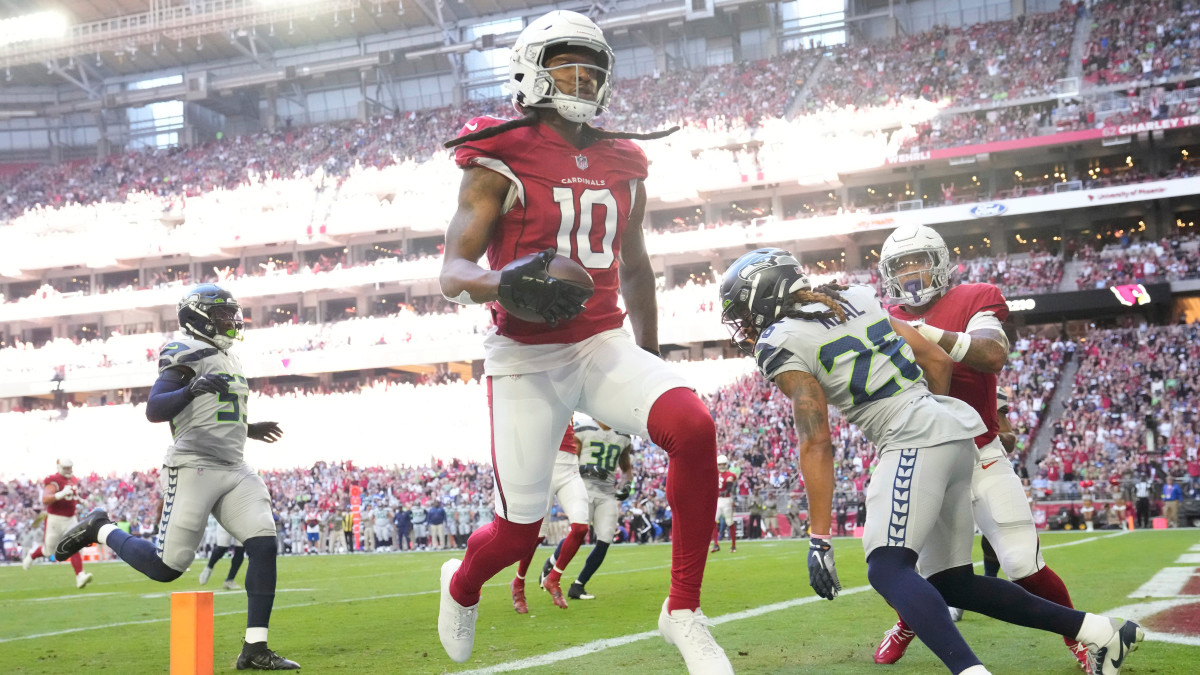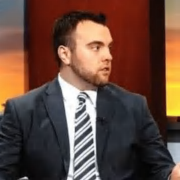The Five Best Landing Spots for DeAndre Hopkins

DeAndre Hopkins is unemployed. He should enjoy the downtime.
On Friday afternoon, the Cardinals released the five-time Pro Bowl receiver. After months of attempting to trade him, Arizona general manager Monti Ossenfort instead cut Hopkins, saving $8.9 million this season while taking a dead cap hit of $21 million.
For the Cardinals, the tank appears to be on for the No. 1 pick next spring. For many contenders, the chase for one of the league’s best receivers now begins.
While nobody was willing to pay Hopkins’s base salary of $19.4 million in 2023, along with surrendering draft capital, his release provides the opportunity for creativity.
However, after seeing Odell Beckham Jr. sign a one-year, $15 million deal—potentially worth $18 million with incentives—will Hopkins take less than he was scheduled to make?
Last year Hopkins played in only nine games, but still totaled 64 catches for 717 yards and three touchdowns. Despite nearing his 31st birthday, he’s far from finished.
Here are five teams who should make a run at Hopkins, along with analysis of why it will and won’t work.
5. New York Giants
Why it works: The Giants are coming off a surprise playoff campaign, but they still need more juice on the perimeter. After paying quarterback Daniel Jones this offseason with a $40 million per year deal, they have to elevate his play. Bringing in Hopkins would do that, allowing Darius Slayton, Isaiah Hodgins and Parris Campbell to slide down the depth chart to more suitable roles.
Furthermore, New York reached the divisional round last season, a place Hopkins has been only once in his career. This would be an opportunity to star in a big market for a quality team, coached by an offensive guru in Brian Daboll.
Why it doesn’t: New York needs to figure out its cap situation. While that’s usually an easy endeavor in the NFL, it won’t be for general manager Joe Schoen. The Giants are paying out a franchise tag to running back Saquon Barkley, along with the aforementioned deal with Jones.
New York currently has $3.8 million in space, so to fit Hopkins, it would require some significant maneuverability from Schoen on the cap sheet.
4. Detroit Lions
Why it works: For the first time in what feels like a decade, the Lions have real expectations. Detroit is the favorite in many corners to win the NFC North, something it has never done (the Lions last won a division in 1993, then known as the NFC Central). Unfortunately for Motown, second-year receiver Jameson Williams is suspended for six games after violating the NFL’s gambling policy.
All this opens the door for Hopkins, who would make an ideal running mate for Amon-Ra St. Brown. Once Williams returns, the Lions would then have a speedy, dynamic trio on the fast, indoor surface of Ford Field. Finally, Detroit has the cap space, sitting at $23.7 million.
Why it doesn’t: After years of ineptitude, does Hopkins see the Lions as a contender, or does he see them as an improving team with work to be done? If it’s the latter, he could shy away from the situation in hopes of going somewhere that almost certainly has January football ahead of it.
The other question is quarterback Jared Goff. Goff was excellent last year, throwing for 29 touchdowns. However, he struggled the two years before with the Rams and Lions, respectively, combining for 39 touchdown passes against 21 interceptions. Hopkins could be looking for a more certain upgrade under center.

3. New England Patriots
Why it works: The Patriots are a fascinating team to consider. After last year’s offensive disaster in which second-year quarterback Mac Jones threw for just 2,997 yards with 14 touchdowns and 11 interceptions, New England spent the offseason trying to remake the unit.
Bill O’Brien is Hopkins’s former head coach with the Texans and the new offensive coordinator in New England. In short, the veteran receiver knows the system and would be the top target of this group. Paired with JuJu Smith-Schuster on the outside, the Patriots would have an intriguing duo, along with tight ends Hunter Henry and the newly acquired Mike Gesicki.
Why it doesn’t: Is Hopkins excited about playing with Jones? It’s a tough sell, as Jones doesn’t rank within the top 10 quarterbacks in the AFC. Beyond that, how does Hopkins feel about playing for O’Brien again? After all, he did trade Hopkins for pennies on the proverbial dollar to the Cardinals following the 2019 season.
Finally, the weather. Hopkins has always played in domes with the Cardinals and Texans. How would Hopkins feel about playing in Foxborough, where the weather turns ugly over the final half of the season?
2. Buffalo Bills
Why it works: Bills general manager Brandon Beane knows he’s under significant pressure. After being the odds-on Super Bowl favorite across almost every sportsbook last year, the Bills flopped in the playoffs, losing 27–10 to the Bengals in the divisional round.
While the roster remains loaded, it has a hole at receiver behind Stefon Diggs. Diggs remains elite, but Gabe Davis has struggled to find consistency and still hasn’t posted a 900-yard season. With Hopkins in the fold, Davis could become one of the game’s best third options, giving quarterback Josh Allen a plethora of weapons.
Why it doesn’t: Few teams have more sizable contracts on their books than the Bills. Buffalo has seven players who have cap hits of at least $10 million this season, and next year, the number jumps to nine, with Allen due more than $47 million.
If Beane is going to restructure money, that means pushing cap hits back while enlarging them in future years. It’s an all-in strategy that will be lauded if the Bills win a Super Bowl for the first time in franchise history. However, should Buffalo do that and still fall short? It makes the next few years that much tougher to navigate.
1. Kansas City Chiefs
Why it works: The Chiefs are trying to become the first repeat champion since the 2003–04 Patriots and are favorites to do so. However, they have a clear need at receiver, with the top two on their depth chart being Kadarius Toney and Marquez Valdes-Scantling.
With Hopkins, it’s almost impossible to guard Kansas City’s attack. The Chiefs have an elite offensive line, arguably the best tight end to ever play in Travis Kelce and a dynamic two-man backfield in Isiah Pacheco and Jerick McKinnon. That’s to say nothing of two-time MVP Patrick Mahomes under center and coach Andy Reid calling the plays.
Why it doesn’t: The Chiefs are capped out. While they can easily move money down the road with Mahomes’s contract or by extending defensive tackle Chris Jones, general manager Brett Veach will need to make multiple moves for a Hopkins deal to come through.
Additionally, even if Kansas City is willing to make a substantial offer, don’t expect a bidding war. The Chiefs had their number last offseason with perennial Pro Bowl receiver Tyreek Hill, and when he exceeded it with his demands, Hill was traded to the Dolphins. Hopkins will have to be comfortable with Kansas City’s number and not the other way around.
